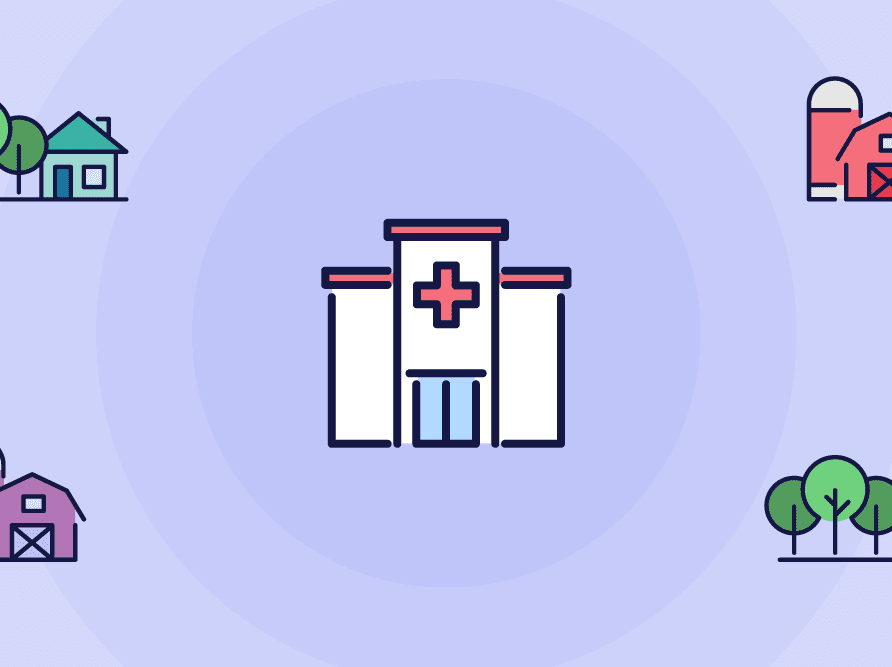Article
A Day in the Life of an ICU nurse
* This content was originally published prior to N. Harris Computer Corporation’s 2022 acquisition of the Allscripts Hospital and Large Physician Practice business segment. Our business is now known as Altera Digital Health.
By way of introduction, I am a registered nurse working in the generalist intensive care unit (ICU) and also a member of the Altera Digital Health team. My parallel experience with assisting in Gippsland Health Alliance’s Sunrise™ implementation and being an intensive care unit (ICU) nurse led me to recently join the Altera sales team. As one might imagine, the sales team is a whole new world to me, with a whole new language. A few months ago, I was asked to speak at a quarterly meeting and was at first nervous about what I could possibly say, but when I discovered the topic was about a day in the life of an ICU nurse, I was relieved. I thought, I can do this!
While there are definitely differences from hospital to hospital, the fundamentals of the ICU are the same. One of the constants across all ICUs is that you are guaranteed to meet amazing people.
So, here’s a peek into the routine of my typical day as an ICU nurse.
Handover
Every ICU nursing shift starts with a handover (or patient report). The handover assures both nurses review and talk through all the documentation and what’s going on in and around the bed. Typically, ICU patients are sedated and reliant on the ICU team for everything, so the handover usually includes the patient’s sedation level, the type and amount of sedation required to keep them comfortable and how much movement they have, both spontaneously and to different levels of stimuli. We often discuss observation trends, such as heart rate, blood pressure and central venous pressure, among other deeper clinical measures ensuring we strike the right balance.
Breathing, which is involuntary for healthy patients, is managed by a ventilator. We discuss the volumes of oxygen-enriched air that are required to maintain appropriate blood oxygenation and the balance of pressures to ensure there is no lung injury from forcing the air in.
From there, we confirm the intravenous lines and gastric feeding tubes going into the patient and what is coming out, from urine and bowel motions, to drains and wounds. We also relay information about daily targets and plans, family dynamics and social circumstances and a myriad of information relevant for a person who is lying in bed unable to wriggle when they feel pressure or ask for something to eat.
Takeover
Once I take over care of the patient, I begin by completing a safety check to make certain that my emergency equipment is available and working and that my bed area is safe, and all machines are plugged in and powered up. Nothing is certain in the ICU.
I start again at the head of my patient and work my way to their toes, assessing and balancing the numbers. I listen to the beeps of the machines—foreign to visitors—that are the daily sounds of any ICU.
Throughout the day, I continually monitor and assess my patient and document, at least hourly, a number of parameters including temperature, heart rate, blood pressure, respiratory rate, and many more.
I think more about technology and documentation now, and how an EMR needs to collate and display all the clinical information entered in a meaningful way. I see extra notes written outside the lines and drawings to better describe clinical assessments, so I understand the challenges in creating the best electronic clinical documentation and why Human-Centered Design is so important. I need the technology to be intuitive so as to not take my focus away from my patient. I’m passionate about clinician input to design and am currently coordinating local input to the Human-Centered Design team’s Sunrise™ Air co-create project.
Back in the room. The beeps and pings of the machines continue, and I subconsciously listen for alarms and unexpected rhythms, assessing whether they are valid or due to other influences, such as a disconnected lead or loose probe.
Daily care plan
The doctors come through on their rounds and I relay all the gathered information and discuss what changes might support the patient’s body to help with recovery. Infusions are altered, added or taken down. Medications are reviewed and adjustments made, while further investigations such as X-rays or scans are considered and ordered. A new plan for the day emerges.
Expecting the unexpected
Just when I think the day is going smoothly a CT is ordered and I have to transfer the patient to a portable ventilator, set up transport monitoring and make all my lines mobile so I can take the patient to the Radiology department. This may be because they have spiked a temperature and the differential diagnosis points to an abscess. In some cases, a patient’s kidney function may have deteriorated, and I need to set up for the insertion of a Vas Cath and commence haemodialysis treatment. I’ll attend to these treatments and continue to assess my patient for any impact, positive or negative, from these activities.
I’ll talk to relatives when they visit and get to know what my patient’s life was like before they came into the ICU. White sheets and bright, sterile lights strip away a person’s personality, so it is great to hear stories from families and friends about their character and daily life. Sometimes this leads to something that we can do to personalise the time in ICU, such as playing music or putting up special photos or wearing favourite socks. Sometimes, we need to connect the family with a social worker to assist in transport or accommodation options for the family. These social workers become medical confidants.
Part of the daily reality of being an ICU nurse is being part of difficult discussions about outcomes and quality of life, about turning machines off and withdrawing treatment. While it’s heart-wrenching to have conversations with families, it is because it has become clear the patient isn’t going to recover. There are shared tears, handholding and hugs. It’s difficult to watch a person’s last breath, but you also have to manage the situation and make sure that the family understands what is about to happen. Ensuring the monitor isn’t beeping, as the lines go flat. The ventilator is disconnected and quiet. Religious preferences are considered. It takes a lot of activity from the nurses to ensure a peaceful death. This is where ICU colleagues provide invaluable support. It might be a smile or a “do you need anything?”, offering time to step away for an extra break while they start to clean up, a few words of encouragement, or the offer of an after-work catch up to share experiences and talk about the day. It’s the informal ICU debriefs that I have shared with colleagues that I credit as helping me stay the course for so long.
Better together
There is a great sense of camaraderie in an ICU simply because we rely so much on each other. When I am at the bedside I cannot leave my patient to go and get medications, equipment or supplies, so I need someone to do the fetching for me. I also can’t move or roll a patient without holding the breathing tube securely, so again I need my colleagues to help. I think that the whole ICU team comprises great team players. We work together systematically and are good at prioritising and processing information. Typically, we are risk averse and expect the unexpected, which helps us get through challenging times. I love the connection with colleagues, patients and families, which is why I still work each month in the ICU. My closest friends are nurses; I love their directness and honesty and their ability to read a situation. Regardless of the outcome, we are always there to pick each other up and go again.
A new day
Then it’s time to hand over to the next shift. Throughout the day, I care for my patient while also preparing my handover to the next nurse, making sure I don’t miss any important details. At the end of the shift, I handover to the next nurse knowing they will follow the same methodical processes I did, as did the nurse before me. I know ICU nurses all over the world show up ready to care for patients and are ready to manage the unexpected.













